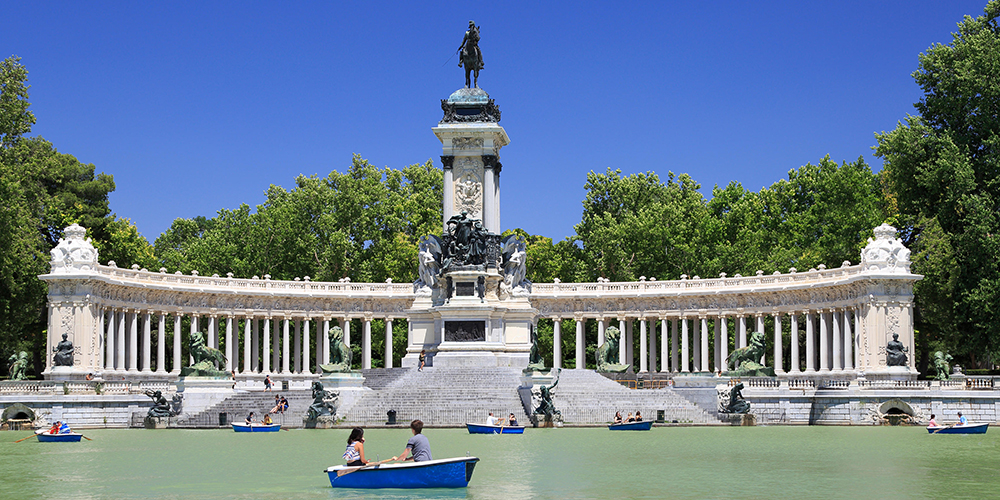
Monument to Miguel de Cervantes
The morning started at the city’s Plaza de España. Located within the plaza was a yet another large monument, this time one to Miguel de Cervantes, one of Spain’s greatest writers. There was no surprise there, as every plaza within the city explored so far seemed to have at least one statue or monument located within relating to an important Spanish figure in history. Across the street next to the plaza was a relatively tall and unremarkable building. As we later discovered, that building and its architecture was directly related to the fascist history of Spain. The style of architecture was very stereotypical of that for buildings built during the time if former dictator Francisco Franco. It was also at the time the tallest concreate building in the world. Learning it was constructed of concrete came as a bit of a surprise for me as an engineer, as one would not expect a tall concrete structure to have survived so long without falling down.

Cherry Blossoms at the Parque de La Montaña
A quick two-minute walk away from the Plaza de España and we ended up on a slightly elevated patch of land which was a very nice small and peaceful park (Parque de La Montaña) compared to the super busy streets of central Madrid with a great overlook on the surrounding landscape. As it was the season, there were many cherry blossoms to see as well as other greenery that helped to provide a calming feeling to my body which had experienced much noise from the crowded streets in the district that our hotel was located within. Little did we know however the significance of the location on which we stood. During the 1930’s long before the park was created a military fortification was located at the exact location that was used in the defense of Madrid during the Spanish Civil War. From 1936 to 1939, the emplacement was crucial in the defense of the city against the attacking fascist forces which were attacking the city from that direction. Its location overlooking the nearby river and absolutely massive Casa de Campo (park roughly five times larger than central park in NYC) gave the republicans a great tactical advantage over the fascist forces located in the Casa, helping Madrid avoid capture until the very last day of the war.

What lay in the middle of the park was a super unexpected and extremely cool find: a fully rebuilt real ancient Egyptian temple: the temple of Debod. What was an Egyptian temple doing in the middle of Spain of all places? As it turns out, the temple was taken apart and rebuilt piece by piece after World War Two in order to save it from being submerged by the construction of the Aswan Dam along the Nile River. Being able to see such a special place was super rewarding for me as a person who has always had a deep interest in historical sites and ancient cultures. Having the opportunity to see such structures without the hassle having to actually visit Egypt was an added bonus to this already amazing Madrid adventure.


Views from Parque de La Montaña: In the background first photo the royal Place, second photo Casa de Campo and suburbs of Madrid
After discovering the significance of the location and the Egyptian temple, we were able to see for ourselves the view the defenders had of the city over 60 years ago. Once at the edge, the views were absolutely spectacular. It was possible to see for miles in the two directions away from the city center. In fact, the pictures I were able to take there were so nice they could pass for ones found on postcards. In addition to the absolutely great views, we were able to experience first-hand the strategic advantage the location had on the battlefield. The high ground allowed defenders of the city to see for miles at the enemy positions. Being able to physically be at the location of and see the landscape involved during the Spanish Civil War gave me a perspective on the events of the conflict in ways that would never otherwise be possible. It was easy to learn about the subject in a classroom as we did before the trip. However, it was impossible to replicate the experiential learning experience that occurred when actually at the physical location. One can only imagine artillery fire flying over the heads of soldiers at the fortification.
